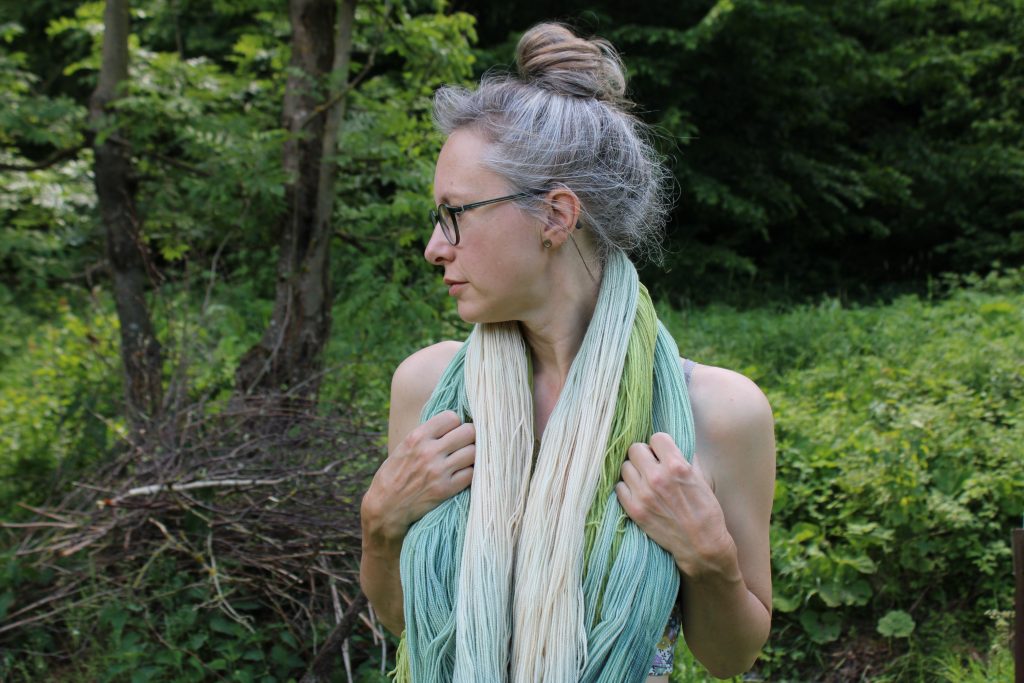
about
Mirja (she/her)
Finds joy and solace in wool and yarn
Is a Swede with England affinity living in Austria
The importance of roots and sense of place increases with her age
Fancies local dye plants – colour potential is all around us, even in urban environments
Applies a resourceful and sustainable business approach to material and people
Promotes “Woolbeing” – the transformative nature of making things with your hands and wool
Finds sharing the joy of making and being creative with others energising
On botanical dyes and experimental dyeing
I use mainly plants that I find in my urban environment in Vienna or around the summer house in Sweden. Or vegetable food scraps from my kitchen. I make an exception for some plant dyes that produce colours I cannot get unless I buy them. I develop methods of dyeing that are resourceful, using as little water and chemicals as possible.

My favourite challenge is to dye blues without using Indigo. I never cease to marvel at the magic of botanical dyes. Because I’m so in love with the magical aspect I mainly dye experimentally and have few repeatable colourways. This is the way I enjoy dyeing the most and I hope you enjoy the results too.
About the yarn and what is important to me
Growing up in Sweden in the 70s and 80s I knitted sweaters with whatever yarn available.
Then I forgot about knitting and later living in Vienna I taught myself to crochet. I sold my colourful hats under the German name “Mirja’s Hauptsachen”. A name capturing both the nature of the items: haupt- = head and what has always been important to me; Hauptsachen = main things = making things with my hands and being creative.
While living in England I encountered Bluefaced Leicester (BFL) wool and yarn. Love at first stitch!
My interest in knitting, wool and spinning grew. And I tried dyeing yarn with acid dyes. Which I also loved. Interestingly I cannot remember how and when I tried dyeing with plant dyes, but once I did it slowly grew on me. The idea to use food scraps from my kitchen and plants I could find on my everyday paths in the urban environment fits well with my urge to use sustainable processes.
Dyeing yarn was my relaxation and creative outlet whilst working on a research project with the topic of how taking part in knitting groups may influence our sense of wellbeing – this is the “Woolbeing“ strand of my work.
When starting my business in 2019 it felt natural to combine all the aspects of wool and dyeing that are important to me. Hence, I source BFL and other high quality bases from the UK and Sweden.
The understanding of the value of wool as a material has increased in Sweden over the past few years. Several mini-mills have been started across the country and I source their yarn and spinning wool as a means to support them, the sheep farmers and the conservation of Swedish sheep breeds.
All of this has influenced where I am today – in the midst of the wool.
Come join me in the woolplay!